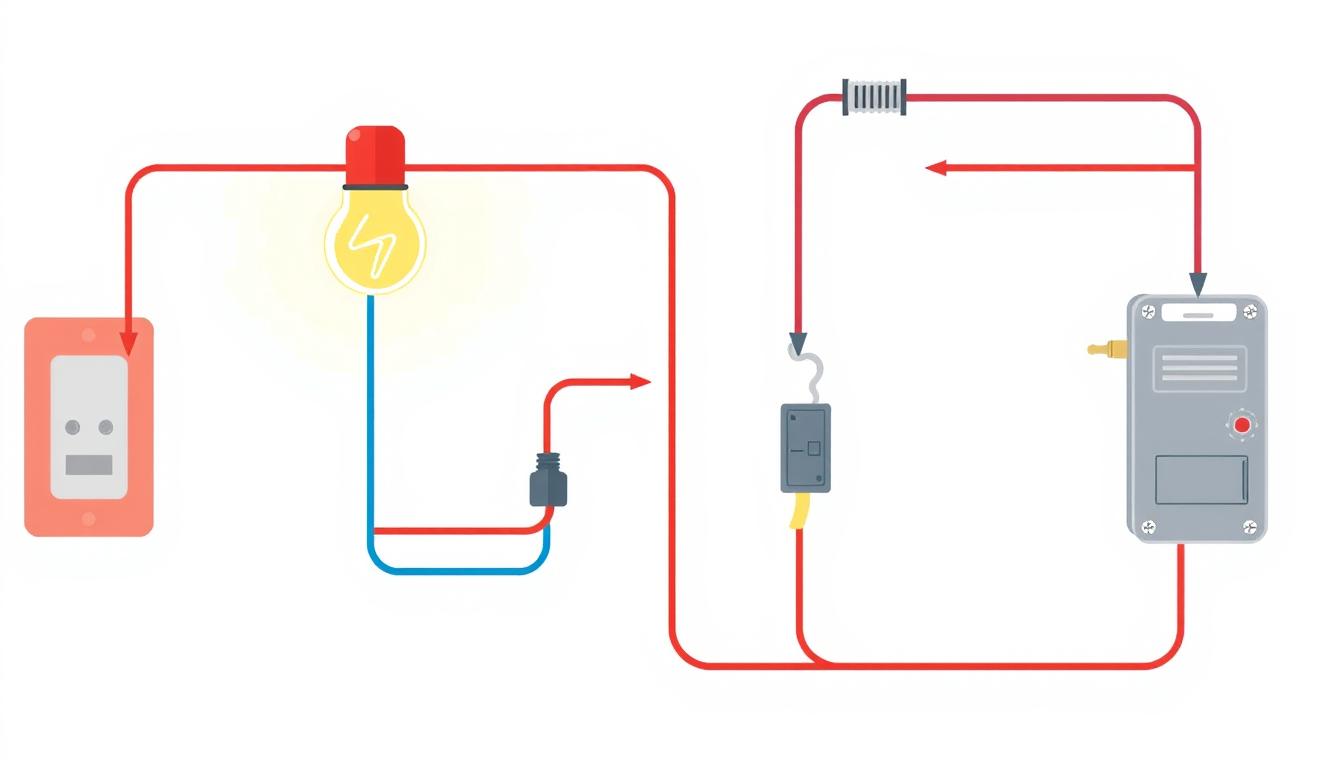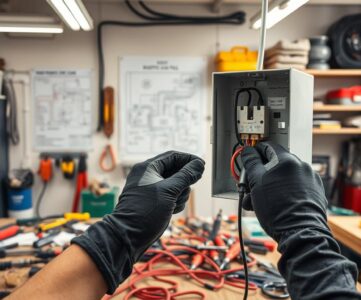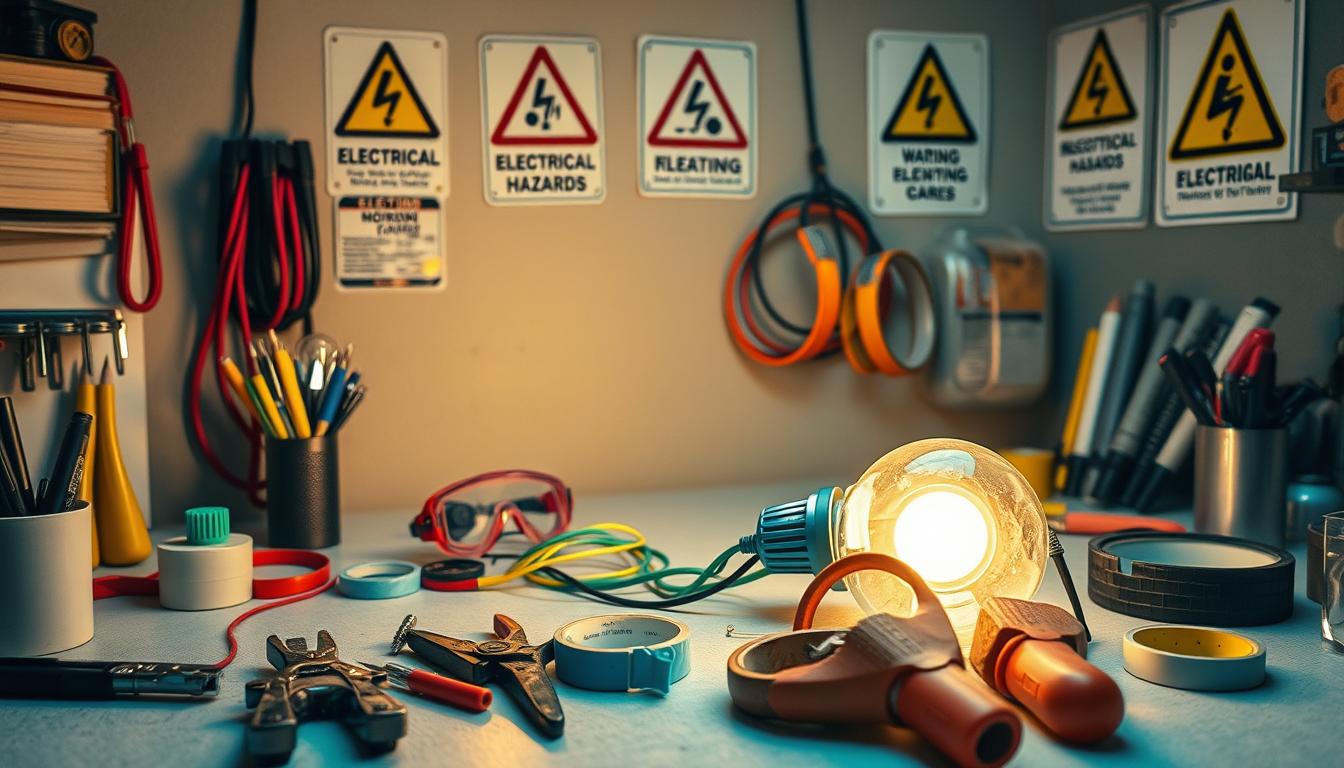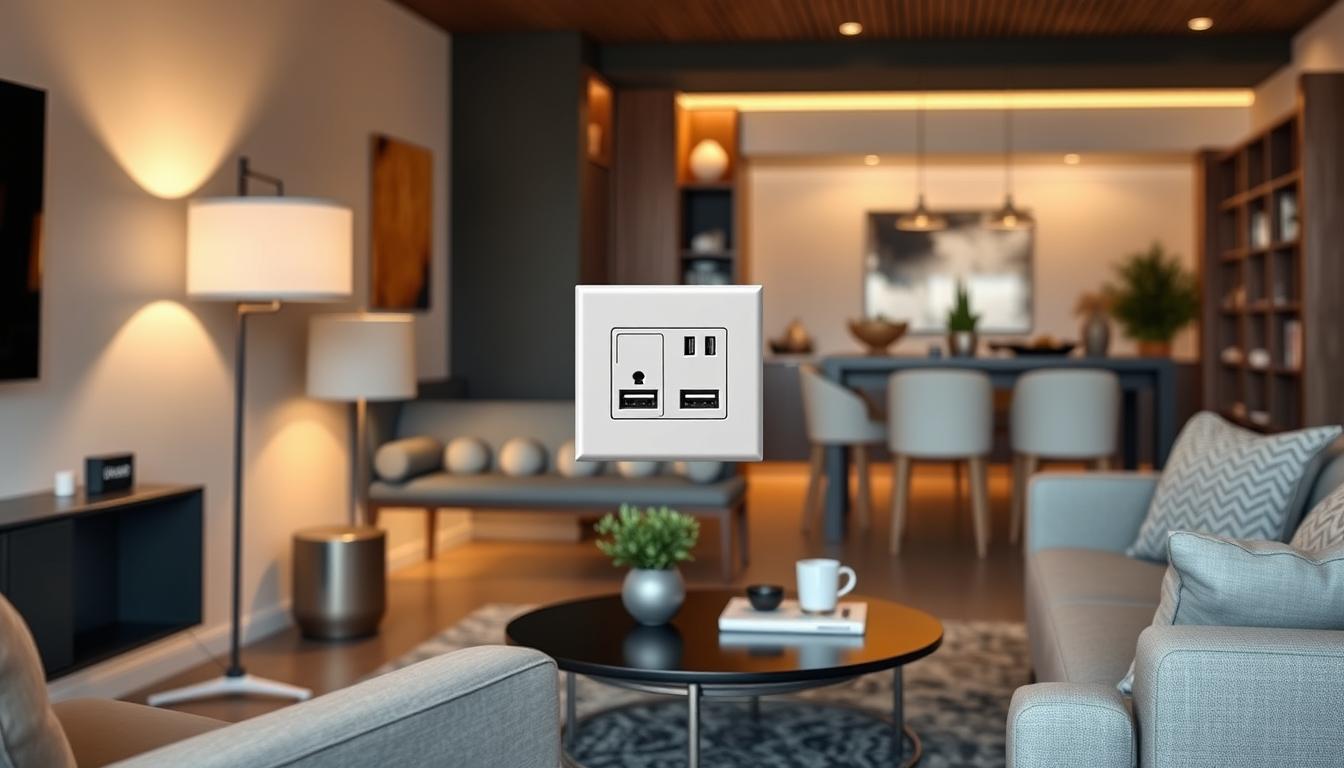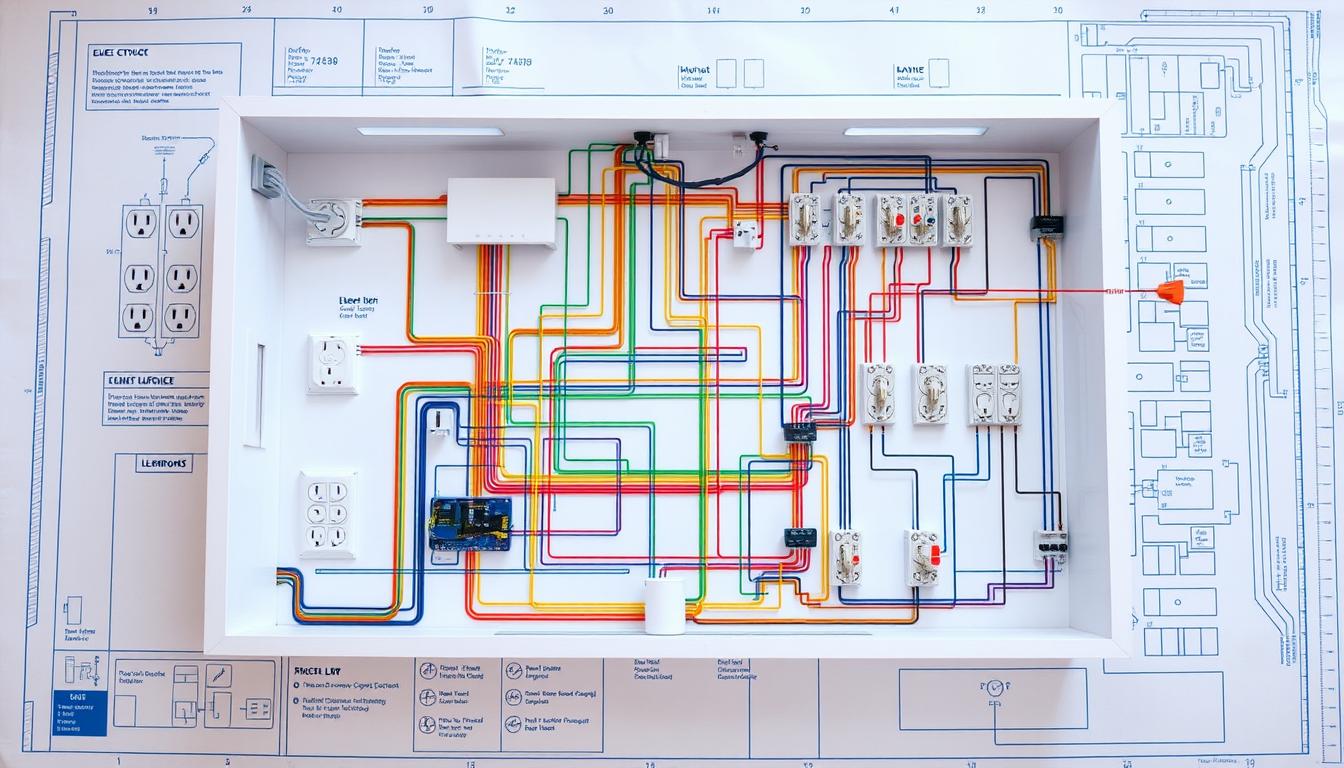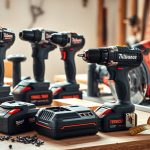Knowing the basics of your home’s electrical system is key for safety and efficiency. It helps you spot problems and make smart choices about your home’s electrical needs. Electrical basics, like circuit types, are vital for homeowners. They ensure your home’s electrical system works well.
Learning about electrical basics and circuit types might seem hard, but it’s not. By understanding your home’s electrical system, you can tackle any issues that come up. Knowing electrical basics and circuit types is the first step to better electrical safety and efficiency in your home.
Key Takeaways
- Understanding electrical basics is essential for home safety and efficiency
- Knowing circuit types can help identify potential electrical issues
- Electrical basics and circuit types are crucial for informed decision-making
- Mastering electrical basics can help you take control of your home’s electrical system
- Learning about circuit types can help you handle electrical issues with confidence
What Are Circuit Basics and Why They Matter
Learning about electrical circuits is key for anyone interested in home wiring and power distribution. An electrical circuit is a path for electric current to flow. This current powers our homes, gadgets, and appliances.
Understanding circuit basics means knowing about conductors, insulators, and switches. Conductors, like copper wires, let electricity flow. Insulators, like plastic or glass, block it. Switches turn the electricity on or off.
Understanding Electrical Flow
Electrical flow, or current, is measured in amperes (amps). It happens when electrons move through conductors. Voltage, measured in volts, pushes these electrons. Together, voltage and current determine a circuit’s power, which is vital for home wiring and power distribution.
Components of a Basic Circuit
A basic circuit has a power source, conductors, a load (like a light bulb), and a control device (a switch). The power source gives the voltage. Conductors carry the current. The load uses the energy. The control device manages the electricity flow for safety and efficiency.
The Role of Voltage and Current
Voltage and current are crucial in an electrical circuit. Voltage drives the current through the circuit. Knowing how voltage and current work together is essential for safe and efficient electrical systems in home wiring and power distribution.
| Component | Description |
|---|---|
| Conductor | Allows electricity to flow through it |
| Insulator | Prevents the flow of electricity |
| Switch | Controls the flow of electricity |
The Anatomy of Your Home’s Electrical System
Knowing how your home’s electrical system is set up is key for electrical safety. Your home’s electrical system has several important parts. These include the circuit panel, wiring, outlets, and switches. The circuit panel, or breaker box, is where all the electrical power starts.
It has circuit breakers or fuses that manage the electricity to different areas of your home.
To keep things safe, it’s important to know how these parts work together. Here are some key points about your home’s electrical system:
- Grounding: This is a critical safety feature that helps prevent electrical shocks and fires.
- Regular inspections: These can help identify potential hazards and prevent electrical accidents.
- Proper wiring: This is essential for ensuring that electricity flows safely and efficiently throughout your home.
By understanding your home’s electrical system and focusing on electrical safety, you can avoid dangers. Always follow safety rules and get help from a pro if you’re not sure about your electrical system.
Electrical safety is a top priority for homeowners, and understanding the basics of your home’s electrical system is the first step in ensuring a safe and secure living environment.
Common Types of Home Electrical Circuits
There are many types of home electrical circuits, each with its own purpose. Knowing about these circuits is key to keeping your home safe and efficient. Circuit breakers are a big part of these systems. They help stop electrical overloads and short circuits.
At home, you’ll find series, parallel, and combination circuits. Each has its own use. For example, series circuits are used for lights, where one light’s failure can shut down the whole circuit. Parallel circuits, on the other hand, are for outlets and switches, letting each work on its own.
Series Circuits in Your Home
Series circuits are often seen in holiday lights and other decorations. They’re easy to set up and need less wire. But, they’re not as efficient as parallel circuits, as a single problem can stop the whole thing. Circuit breakers are crucial in series circuits to avoid fires and damage.
Parallel Circuits and Their Applications
Parallel circuits are more common in homes because they’re flexible and efficient. Each part of a parallel circuit has its own path for electricity. This means if one part fails, the others can still work. Parallel circuits are safer, thanks to circuit breakers that prevent overloads.
Combination Circuit Arrangements
Many homes use a mix of series and parallel circuits. This mix makes the electrical system more flexible and efficient. Understanding how these circuits work and the role of circuit breakers ensures your home’s electrical system is safe and reliable.
Understanding Your Home’s Circuit Panel
To understand your home’s electrical system, knowing the circuit panel is key. It’s the core of your home’s electrical setup. Here, you’ll find wiring diagrams that show how everything is connected. These diagrams help you figure out which circuits power different areas of your home.
When you look at wiring diagrams, start with the main panel. It’s often in a basement or garage. The panel has breakers or fuses that manage electricity to various parts of your home. Knowing the panel’s layout and wiring diagrams lets you safely fix or adjust your electrical system.
- The main breaker or fuse that controls the whole system
- Breakers or fuses for specific circuits
- Any safety labels or instructions
By studying your home’s circuit panel and wiring diagrams, you keep your electrical system safe and working right.
Essential Safety Features in Home Circuits
Electrical safety is key in every home. It’s important to have the right safety features to avoid accidents. Home electrical circuits need safety devices to prevent electrical shocks, fires, and other dangers. Let’s look at the essential safety features every homeowner should know.
These safety devices add an extra layer of protection against electrical accidents. They are a crucial part of any home electrical system. By understanding how they work, homeowners can keep their homes safe and secure.
Ground Fault Circuit Interrupters (GFCIs)
GFCIs are vital in home electrical circuits. They protect against ground faults, which happen when electricity finds an unintended path to the ground. GFCIs monitor electricity flow and trip the circuit if they find a ground fault.
Arc Fault Circuit Interrupters (AFCIs)
AFCIs are also key in home electrical circuits. They protect against arc faults, which are sparks or arcs of electricity. AFCIs monitor electricity flow and trip the circuit if they detect an arc fault.
Circuit Breakers vs. Fuses
Circuit breakers and fuses protect home electrical circuits from overloads and short circuits. They both serve the same purpose but work differently. Circuit breakers trip and shut off power if they detect an overload or short circuit. Fuses melt and break the circuit if they detect an overload or short circuit.
Circuit breakers are generally more effective than fuses for electrical safety. They can be reset and reused. Fuses must be replaced if they blow. Knowing the difference helps homeowners choose the right safety device for their home electrical system.
Reading and Understanding Circuit Diagrams
Understanding circuit diagrams is key for fixing electrical problems at home. Wiring diagrams show how components and connections work together. This makes it easier to spot and fix issues. To read these diagrams, you need to know the symbols for different parts, like wires and switches.
Circuit diagrams can show various circuit types, like series and parallel circuits. Knowing how to read these can help you understand your home’s electrical system. Here are some important things to look for:
- Component symbols: These show the different parts of the circuit, like wires and switches.
- Connection lines: These show how components are connected.
- Circuit paths: These show where electricity flows in the circuit.
Learning to read circuit diagrams can help you understand your home’s electrical system better. It lets you spot problems early, saving you time and money.
Understanding circuit diagrams is a valuable skill for any homeowner, and can help you take control of your home’s electrical system.
| Component | Symbol | Description |
|---|---|---|
| Wire | – | Represents a wire or connection between components. |
| Switch | SW | Represents a switch or control device. |
| Outlet | O | Represents an outlet or receptacle. |
Common Circuit Problems and Warning Signs
Knowing about electrical basics helps spot issues in your home’s circuit system. A common problem is an overloaded circuit. This can make lights flicker, outlets get warm, or circuit breakers trip often. Spotting these signs early can stop bigger problems like electrical fires.
Short circuits happen when electricity finds an unintended path, often because of bad wiring or damaged insulation. This can make a lot of current flow, causing circuit breakers to trip or fuses to blow. It’s key to fix these issues fast to keep you safe and avoid damage to your electrical system.
Identifying Overloaded Circuits
- Flickering or dimming lights
- Warm or hot outlets
- Frequently tripped circuit breakers
- Burning smells or odors
Short Circuit Detection
To spot a short circuit, watch for sparks, burning smells, or odd sounds from your electrical system. If you think there’s a short circuit, turn off the power to the area and get a pro electrician to check and fix it.
When to Call a Professional
If you’re not sure how to handle a circuit issue or warning sign, get a licensed electrician. They can check your electrical system, find problems, and teach you about electrical basics and circuit breakers. This ensures your safety and follows local rules.
| Problem | Warning Signs | Action |
|---|---|---|
| Overloaded Circuit | Flickering lights, warm outlets | Reduce power consumption, consult electrician |
| Short Circuit | Sparks, burning smells, unusual sounds | Switch off power, consult electrician |
Maintaining Your Home’s Electrical System
To keep your home safe and efficient, regular electrical system maintenance is key. This means checking your wiring, circuit breakers, and outlets for damage. A well-kept electrical system helps avoid fires and accidents.
A regular inspection checklist should include:
- Checking for worn-out or damaged wires
- Verifying circuit breaker functionality
- Ensuring outlet safety and security
Preventive maintenance tips also play a big role. These include:
- Scheduling annual electrical system checks with a licensed electrician
- Avoiding overloading circuits with too many appliances
- Keeping electrical panels and circuit breakers clean and dust-free
By following these tips, you can keep your electrical system safe and efficient. This ensures reliable power distribution and reduces the risk of electrical hazards.
| Maintenance Task | Frequency |
|---|---|
| Inspect wiring and outlets | Every 6 months |
| Check circuit breaker functionality | Every 12 months |
| Schedule electrical system check with a licensed electrician | Every 12 months |
Conclusion: Mastering Your Home’s Electrical Safety
You now know the basics of home electrical circuits. This guide has covered everything from electricity flow to circuit types. You have the knowledge to keep your home’s electrical system safe and efficient.
Remember to check your home’s electrical parts often. Fix any issues quickly and do seasonal maintenance. This way, you can protect your family and keep your electrical system working well.
If you need more help or have questions, talk to licensed electricians. Or look for more information on home electrical safety. With what you’ve learned, you’re ready to handle your home’s electrical needs.
